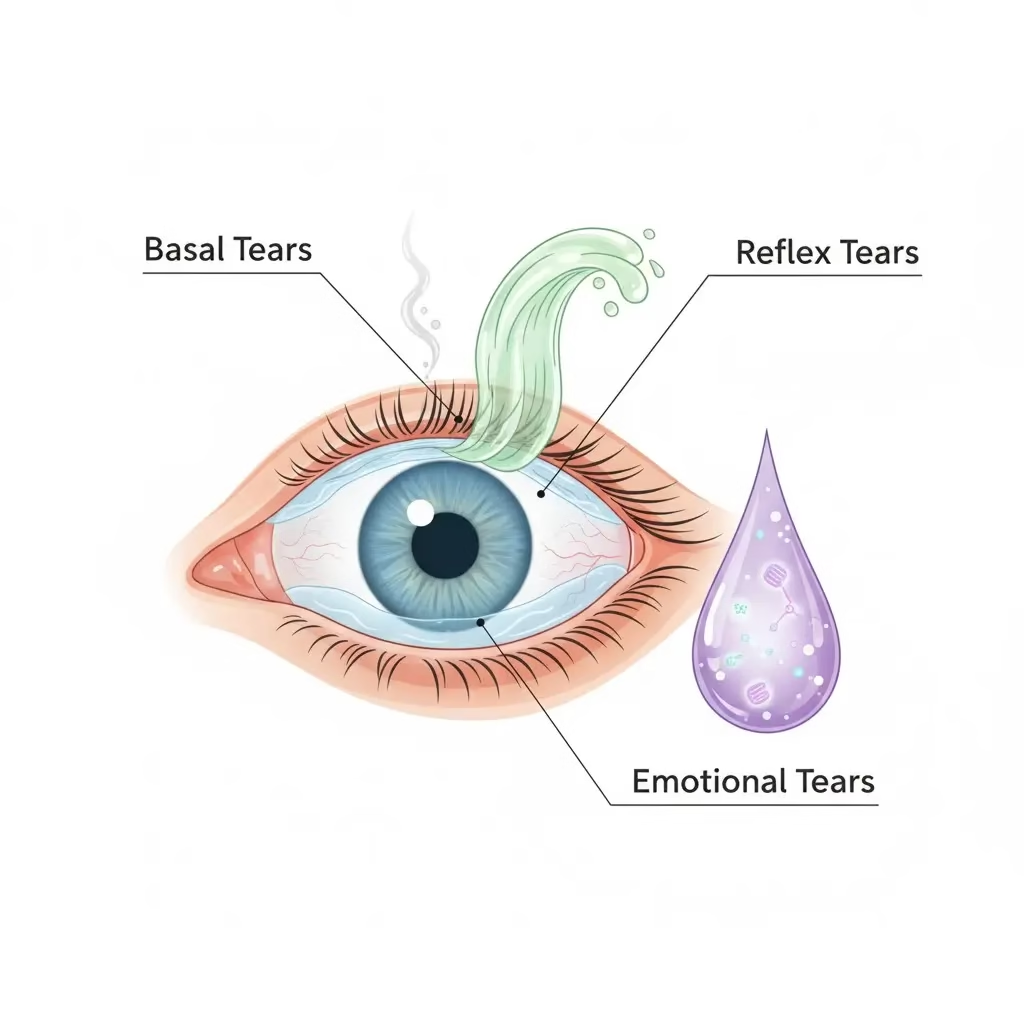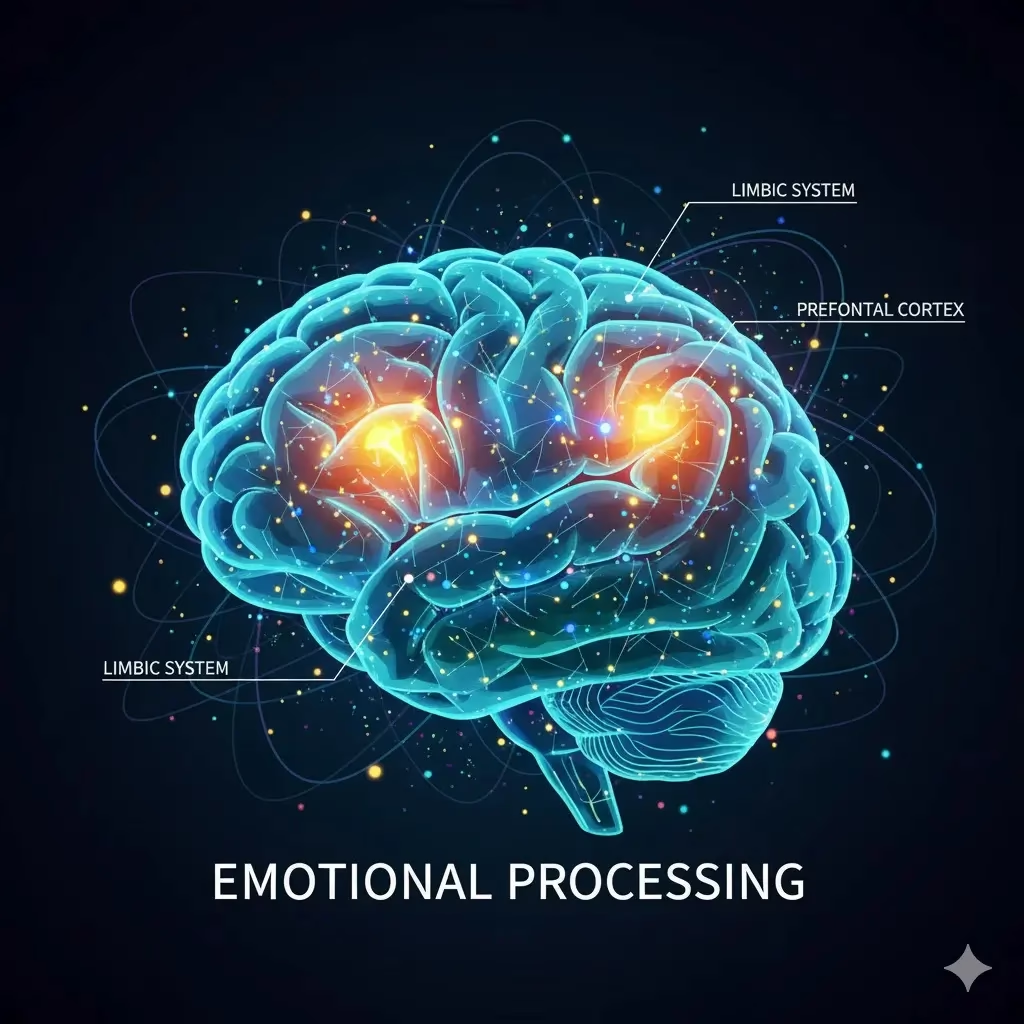
I used to think of crying as a weakness, something I had to hide. Years of stuffing down emotions taught me a hard truth: trying to be “strong” all the time is simply exhausting and detrimental to mental health. This journey led me to discover the powerful healing that comes from just letting the tears fall. I believe that embracing your emotions, even the messy ones, is the ultimate act of self-care and strength.
Why We Must Rethink Crying to Boost Our Health

A lump forms in your throat. Your vision blurs. A warm wetness slides down your cheek. Crying is one of the most natural and strong human experiences. It’s a language everyone knows. Still, in many modern cultures, we often treat crying like a failure or a sign of weakness. People often tell us to “be tough,” “stop being dramatic,” or “just get over it.” But what if this natural, sometimes messy, rush of feeling is not a problem at all? What if it is a powerful, biological tool for healing and keeping us well?
Crying is far from being a sign of being fragile. A good cry is a key function with big and surprising health benefits. These benefits are both physical and mental. It is time to forget the social shame. We must start seeing tears as a vital part of a balanced, emotionally smart life.
The Three Kinds of Tears: Not All Crying is Equal

Before we talk about the good things crying does, we need to know that tears are complex. Science groups them into three main types. Each one has a different job:
- Basal Tears: These are the constant, unseen tears. They always keep your eyes wet, fed, and safe from dust and dirt. They are key for clear sight and eye health.
- Reflex Tears: Irritants cause these tears. Smoke, onions, or a stray eyelash can trigger them. Their job is simply to protect. They flush out foreign objects using a quick flow of fluid.
- Emotional Tears (Psychic Tears): These are the tears linked to sadness, happiness, worry, or loss. Emotional tears have different chemicals than basal or reflex tears. They hold more stress hormones, like ACTH and prolactin. Many believe the act of weeping helps the body get rid of these extra hormones.
It is this last type—the emotional cry—that gives us the most helpful, healing value.
The Physical Health Payoffs of Crying
The good things crying does are not just in your head. We can actually measure them in your body’s chemicals and how your body works.
1. Stress and Toxin Release: The Body’s Chemical Cleanse
When your body is stressed all the time, hormones and chemicals build up. Emotional crying works like a natural, biological release valve. As we noted, emotional tears contain hormones related to stress. When you weep, you are truly lowering the amount of these chemicals in your system.
One main idea is that crying helps your body go back to normal balance (homeostasis) after a time of major emotional stress. Studies looking at the chemicals in emotional tears support this. They show that tears carry away substances linked to stress. This provides a deep, cleansing effect. That is why you often feel a sense of ease—a physical feeling of being “lighter”—after a long, strong cry.
2. Pain Reduction: A Natural Analgesic

It may sound strange, but crying can act as a light pain killer. Research suggests that emotional tears cause your body to release endorphins and oxytocin. These natural brain chemicals are often called “feel-good” hormones. They help calm both body and mind pain. Oxytocin makes you feel especially calm and cozy. Endorphins work to dull pain. This chemical process can lift your mood and lessen distress. It works as an internal way to comfort yourself.
3. Mood Elevation: The Post-Cry “Reset”
Crying does more than just release stress; it can make your mood better right away. When you stop tears, you hold physical tightness in your body. This can raise your heart rate and cause shallow breathing. A full, deep cry often means taking quick, deep breaths (sobbing). This helps to control your breathing and slow your heart rate down.
Once the main crying stops, this body control—along with the release of endorphins—acts like a “reset” switch for your central nervous system. This often leaves you in a better mood than before you started crying. This is true unless you have clinical depression.
4. Better Sleep: Cooling Down to Wind Down
Stress and worry are known to ruin sleep. A good cry helps your body get ready for rest. It does this by physically releasing stored tension and lowering the amount of stress hormones that keep you awake. Many people say they feel tired, but also deeply calm, after crying. This makes it easier to fall asleep faster. It also helps you get a deeper, more refreshing rest. This is a vital, but often forgotten, benefit for your total mental health.
The Psychological and Interpersonal Benefits

The good things about crying are not just for our bodies. They are also very important for our mental well-being and how we connect with others.
1. Emotional Regulation: Processing and Acknowledgment
One of the strongest mental benefits of crying is its role in handling our feelings. Crying is not just showing sadness. It is the act of admitting you have a feeling. When you let yourself cry, you are giving time and proof to the emotions you are having. This could be sadness, joy, anger, or deep sorrow.
If you block your feelings, it can cause emotional numbness. It can lead to avoiding problems. It stops you from fully dealing with the real issue. By letting tears fall, you are engaging with your inner life. This is the crucial first step to solving problems. This active processing is key to having a stable mind over time.
2. Communication and Social Bonding

Tears are a powerful way to talk without words. When we cry near others, we show that we feel weak or upset. This signal is recognized all over the world. It brings out empathy, kindness, and a desire to help in those who see it.
This power of tears to get help and comfort is an important function that developed over time. Getting support during a moment of weakness makes social bonds stronger. It creates deeper closeness. It makes us feel like we belong. In a world that often feels lonely, this real connection is very valuable for mental health.
3. Self-Soothing and Calm
The feeling of tears on your face helps to calm you down. So does the way your emotional state cools off after. Crying can be a private, inner tool for managing upset feelings. You simply slow down, give in to the feeling, and let your body take control. This simple act can be deeply grounding. It brings you back to the present moment. It moves you away from thoughts that feel too much to handle.
How to Do It: Embracing the Good Cry

Knowing the benefits is one thing. Actually letting yourself have a good cry is another. This is especially true if you have trained yourself for years to hold tears back. Here is a guide on how to cry in a safe, healing, and effective way.
Step 1: Find a Safe Space
You need to feel safe and private to let your feelings out. This is especially true if you worry about being seen. Find a time and place where no one will bother you or judge you. This might be your bedroom, a locked bathroom, your car, or a quiet spot outside. The goal is to make a place where you feel completely free to let everything go.
Step 2: Spot the Trigger or Need

Sometimes tears just happen. But often, something specific causes them. Take a moment to name how you feel: I am feeling too stressed by my job. I am sad about a recent loss. I am angry about an argument. Naming the feeling proves it is real. It lets you focus the energy of your cry.
- Example A (Loss): You have been trying to stay strong all week after losing someone special. You decide to look at old pictures or listen to a song that reminds you of them. You let the memory bring on the tears.
- Example B (Stress/Overwhelm): You feel huge pressure from your deadlines. You take a 15-minute break, put your head on your desk, and picture the stress leaving your body with each sob.
Step 3: Use a Starter (If Needed)
If you need to cry but cannot quite get started, you might need something to help.
- Music: Play songs that you know bring strong feelings to the surface.
- Media: Watch a very moving scene from a film or a commercial that makes you feel emotional.
- Writing: Write down exactly what is bothering you. Do not hold back. Write until the feeling takes over.
- Memory: Choose to remember a time of great sadness, happiness, or frustration.
The goal is not to force sadness. The goal is to give yourself permission to feel what is already waiting under the surface.
Step 4: Allow the Full Release
Once the tears begin, do not fight them. Let your face get wrinkled. Let the sobs come out. Do not worry about how you look or how long it lasts. This is the stage where the bad chemicals leave your body. Focus on your breathing. Let the deep, shaky breaths calm your nervous system. Remember that this is an act of caring for yourself.
Step 5: The Post-Cry Wind-Down

What you do after the crying stops is the most important part. This is the reset phase.
- Drink: Crying uses water. Drink a glass of water to replace it.
- Wash: Clean your face to remove the salt and help with puffiness.
- Ground: Do something to bring yourself back to the present. This could be stretching for five minutes, taking a short walk, or using a mindful exercise to feel the cool air on your skin.
- Be Kind to Yourself: Accept your vulnerability with kindness. Do not criticize yourself for being emotional. Say instead, “I truly needed that. I let go of a lot of stress.”
What Happens When You Don’t Cry?
Always stopping your tears can hurt your health. Blocking feelings does not make them vanish. It simply pushes them inside your mind and body. This forced holding-in of emotion is linked to:
- Body Problems: Blocked feelings can show up as headaches, tight muscles (especially in the jaw, neck, and shoulders), stomach issues, and maybe even heart problems over time due to constant stress.
- Stiff Mind: Avoiding feelings that are hard can make your mind stiff. This makes you less flexible and harder to adapt when life gives you problems.
- Misplaced Anger: Sadness that is not dealt with often comes out as being easily annoyed, being too critical, or having sudden, strong anger at things that are not the real problem.
- By letting yourself cry, you are choosing proactive health over chronic stress.
Crying and Society

It is important to discuss the deep cultural differences when we talk about crying, especially between men and women. For years, men have been taught that crying is “not manly.” They see it as a threat to their strength. This leads to them blocking their feelings a lot. Women are more socially allowed to cry. However, they can be judged for being “too emotional” or “crazy.”
It is important for everyone’s health to break down these rigid, harmful ideas. The basic biology of tears is the same for all humans. The chemical release is the same. Knowing this lets us challenge these old rules. Real strength is not in having no feelings. True strength is in having the courage to feel and process your feelings honestly.
The Hidden Health Benefits of a Good Cry: Summary

| Benefit Category | Specific Advantage | How It Works |
| Physical Health | Reduces Stress & Releases Toxins | Flushes out stress hormones (like ACTH) from the body. |
| Physical Health | Provides Natural Pain Relief | Causes the release of endorphins and oxytocin. |
| Psychological | Helps Emotional Processing | Accepts and proves complex inner feelings are real. |
| Interpersonal | Builds Social Connection | Shows you are weak and brings comfort and empathy from others. |
| Wellness | Improves Mood and Sleep Quality | Resets the nervous system and slows the heart rate after strong feeling. |
FAQ
Q: I rarely cry. Does this mean I have a problem? [Image 10: Person looking thoughtfully/calmly]
A: Not always. How often you cry is very personal. It depends on your culture, nature, and life events. Some people handle stress in other ways, such as exercise or talking. But, if you want to cry but cannot, or if you feel numb all the time, it might mean you are blocking emotions. Talking to a health expert may help.
Q: Is it possible to cry too much?
A: Crying is good for your health. However, if you cry too much and cannot stop, or if it stops you from living your daily life for weeks without a clear cause, it might be a sign of a mental health issue. This could be depression or anxiety. If you worry about how often or how hard you cry, please get professional health advice.
Q: Why do I feel worse right after I cry?
A: The moments after crying can feel tiring, physically draining, or even painful (from tension and eye strain). The real “health benefit” is usually felt 20-30 minutes after the crying stops. This is when your nervous system has fully reset. If you always feel worse, be sure to be kind to yourself and take care of your body (water, rest) during the time you wind down.
Q: Are happy tears different from sad tears?
A: The feelings they show are different. But scientifically, tears of intense happiness have chemicals very similar to tears of sadness. Both types of tears are caused by strong emotion. They both work to bring your body’s nervous system back to a normal, balanced state.
References
Note: This section lists resources related to the article’s content for further reading and context.
- NIH – The power of tears
- Healthline – Benefits of Crying and Why It’s Good
- Health Harvard – Is crying good for you?
Recent Posts


